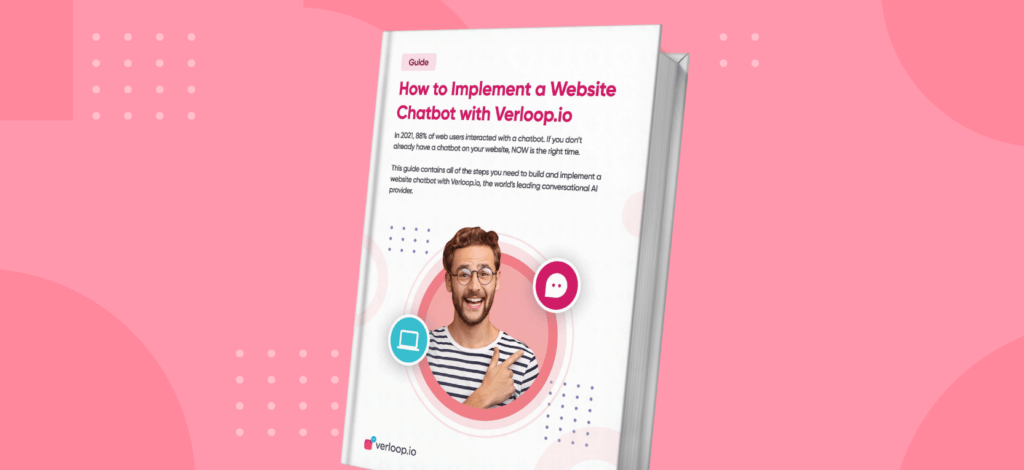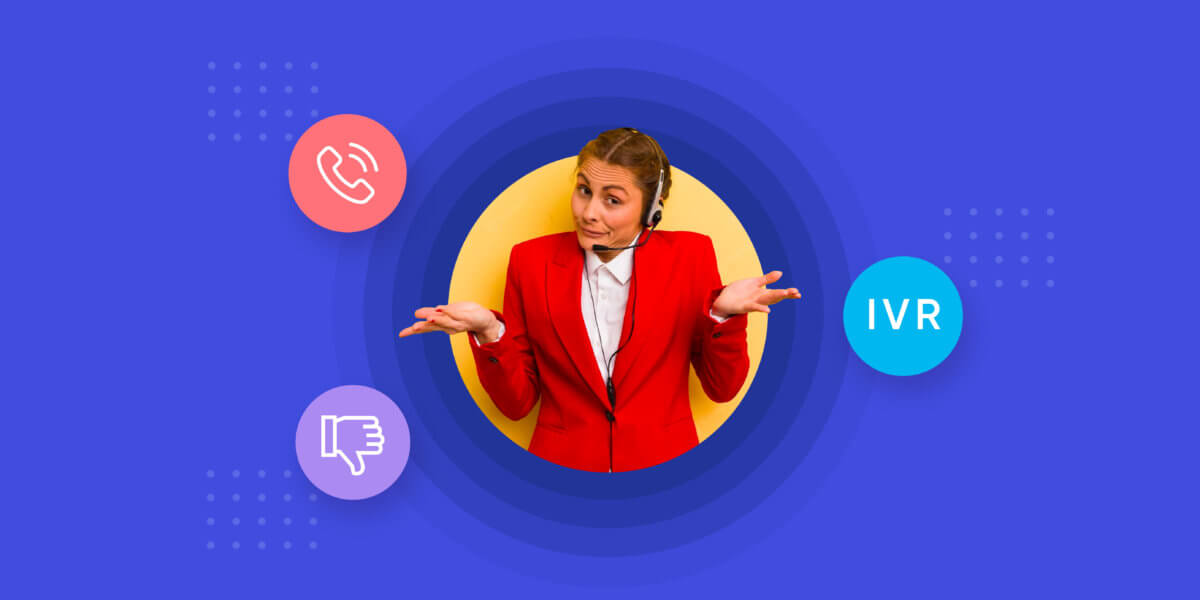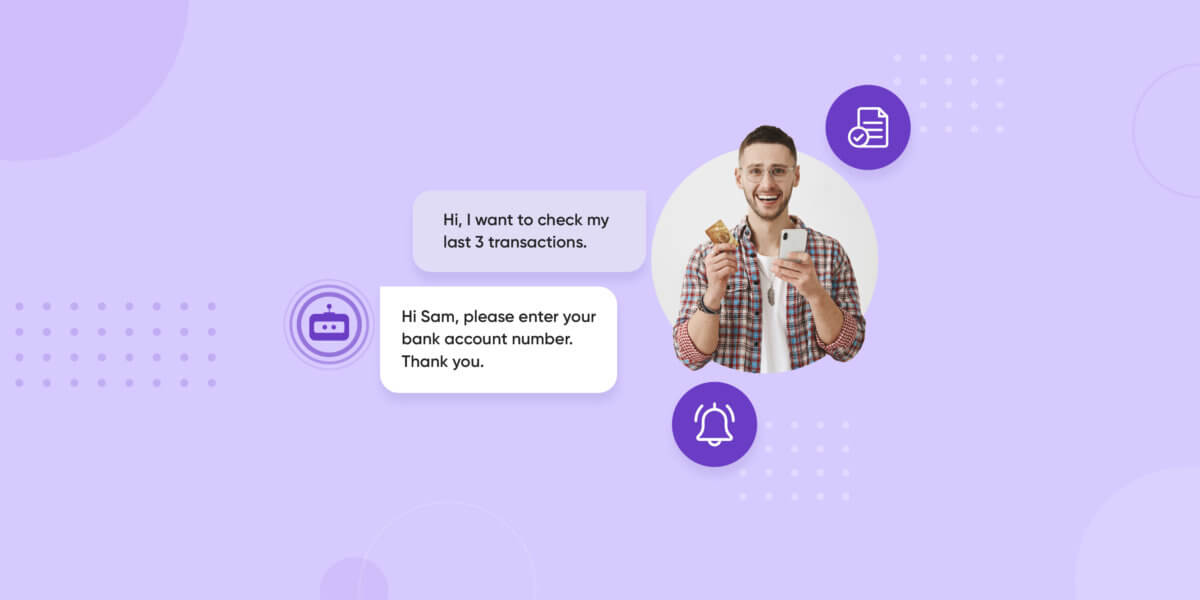5 Types of Chatbots: Which One’s Best For Your Business?
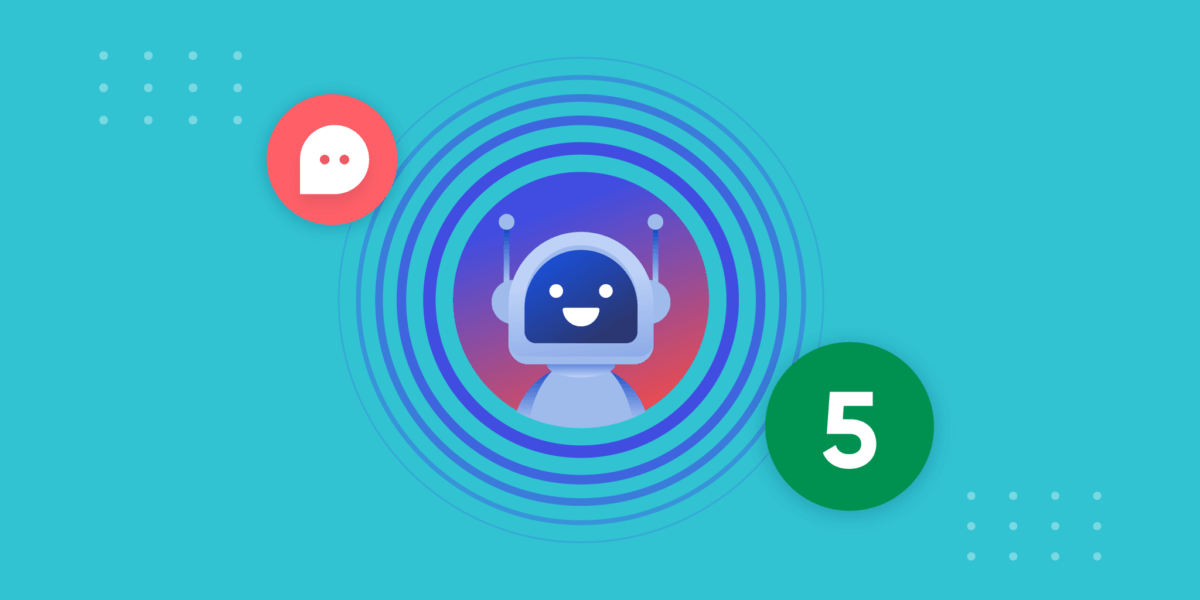
5 Types of Chatbots: Which One’s Best For Your Business?
George Henry Lewis once said, “Science is the systematic classification of experience.” We get you the five types of chatbots in this blog post.
Only things that can be classified and codified are allowed to enter our realm of understanding and acceptance. And given the divide between whether 2023 will be the next reckoning or the death of chatbots as an entity, we take a much more moderate stance; Chatbots are now a part of our lives.
So in order to expedite this process, welcome to the five types of chatbots that are broad (and possibly slightly inaccurate) classifications of the bots that most people deal with on a daily basis.

Five types of chatbots that can help you build and scale your operations
AI automation, by far, has only reaped phenomenal, tangible results for businesses from different industries. Here are 5 types of chatbots you can use to automate, streamline, and scale your business.
1. Menu-based chatbots
This is usually any business’ initial pick if they are looking to implement basic, first-line automation in their company. These chatbots work on a simple button-based rule, where the user is presented with a defined set of responses to choose from.
The conversation design is scripted and follows a set pattern. It is usually created to solve specific business use cases.
For example, an eCommerce company can deploy a menu-based chatbot to assist users after a product is delivered with set menu options. It would look something like –
Hi! Thanks for visiting our store. Please choose from the options below to continue.
- Return a product
- Exchange a product
- File for a refund
- Give feedback
These chatbots work the best to answer most of your L1 questions – your FAQs.
Suggested Reading: Top 10 Industries That Uses Chatbots

2. Keyword-driven chatbots
While your menu-based chatbots help you solve most of your recurring queries with a simple chat flow, a keyword-driven bot goes a step up. These types of chatbots are trained to identify and get triggered by “certain keywords”. These defined keywords, when mentioned by the user in their query, are picked up by the bot which then attempts to provide a relevant response based on it.
For example, a user might type in “I need to know the status of my refund” in the chat box. A keyword-driven chatbot will immediately pick up “status” and “refund” from the query to identify the user query. It will then respond with further relevant questions like “Please provide me with your refund ID”
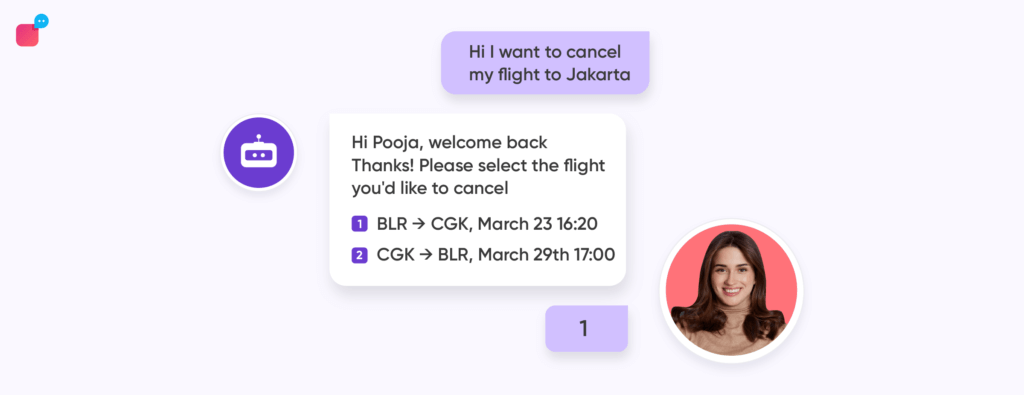
3. AI chatbots
Want to level up from keyword-driven bots? Blend artificial intelligence into your digital ecosystem.
AI-powered chatbots are emerging as the smartest, self-reliant solution to several communication needs of businesses today. Whether built for internal communication or to serve your external stakeholders like your beloved customers, AI chatbots use an amalgamation of several technologies to function.
Natural Language Processing and Understanding (NLP/NLU) and machine learning (ML) allow these chatbots to render natural user conversations. Building an AI chatbot from scratch takes more time and resources since the process can be a bit complicated. However, a chatbot solution like, for example, Verloop.io, comes equipped with extensive industry-based training datasets for a business to build and polish its AI chatbot.
These types of chatbots are largely independent, and allow users to self-serve most of their concerns, before any agent intervention is needed. You can train these chatbots to converse in multiple languages to support the lingual preferences of your target audience. They are self-evolving, meaning they learn and adapt their course based on past interactions.
AI also helps these chatbots stay relevant and contextually intelligent. They are able to map the user’s intent, tone, and emotion – all through textual inputs to respond appropriately. Read: Five ways to make your chatbot more contextually aware.
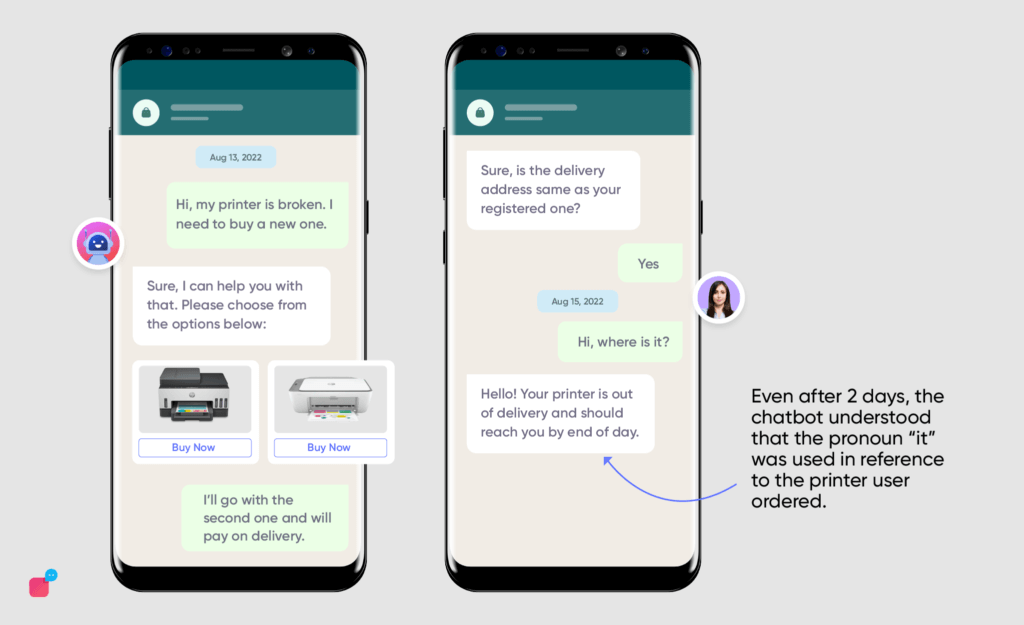
4. Hybrid chatbots
Want the best of both worlds? Go hybrid.
Hybrid chatbots bring in the simplicity of rule-based bots and AI’s ability to simplify complexity. These types of chatbots can solve linear use cases and answer FAQs seamlessly. Whereas, it can also display empathy, intelligence, and nuance in its approach – which is typical of a highly developed AI.
What’s more? Hybrid chatbots are also smart enough to know when to intelligently route a query/ticket to a live agent. For example, if a user types in ? as a response, an intelligent hybrid bot would pick up a tone of dissatisfaction/unhappiness from it and assume that it’s probably for the best for a human agent to take over the chat to offer a more customised, apt resolution.
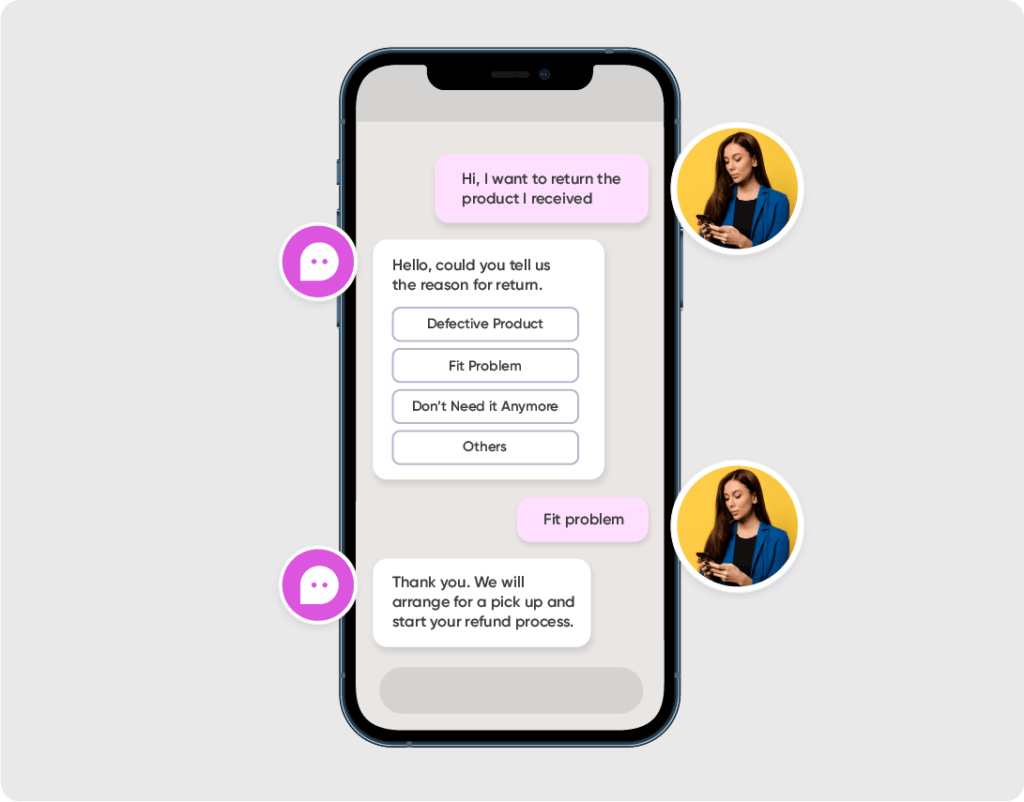
5. Virtual assistant bots
You know what these are, and have undoubtedly interacted with them at some point in time. Meet your Siri, Cortana, Google Assistants and Alexa.
Apple and Google have large installed bases of users on smartphones.
Microsoft has a large installed base of Windows-based personal computers, smartphones and smart speakers.
Alexa has a large install base for smart speakers.
Virtual assistants are built to assist users in their day-to-day lives. They can check the weather, set an alarm, make calls, get updated on news, play music, navigate to locations and more. VAs have been well documented; they’re hyper-smart, always at your service and ripe for monetisation.
Which chatbot is right for your business?
The answer to this is that it’s highly subjective.
A rule-based chatbot, all in all, takes less time, effort, planning, and deployment costs. With the limited scope of functionality, scripted chatbots are best at resolving common queries. So, if you have a rather small business with a few hundred clients, a rule-based chatbot should do the trick without demanding too much from you.
Whereas, if you are looking to scale up or a company with an established name and big customer base, investing in AI technology should suit you the best. A conversational AI solution like Verloop.io can help you get started with a chatbot for your customer support in no time. Know how to build one below!
